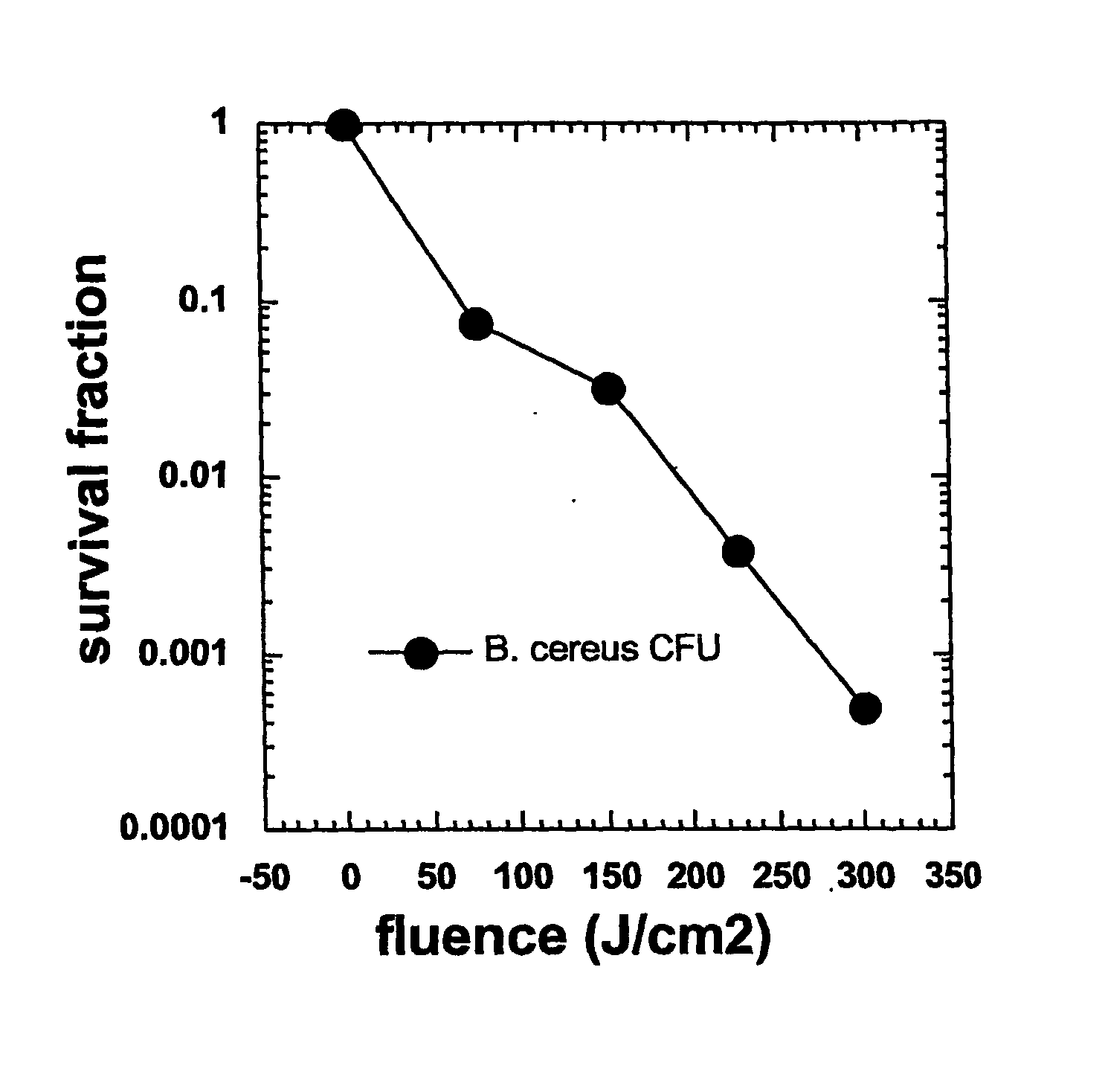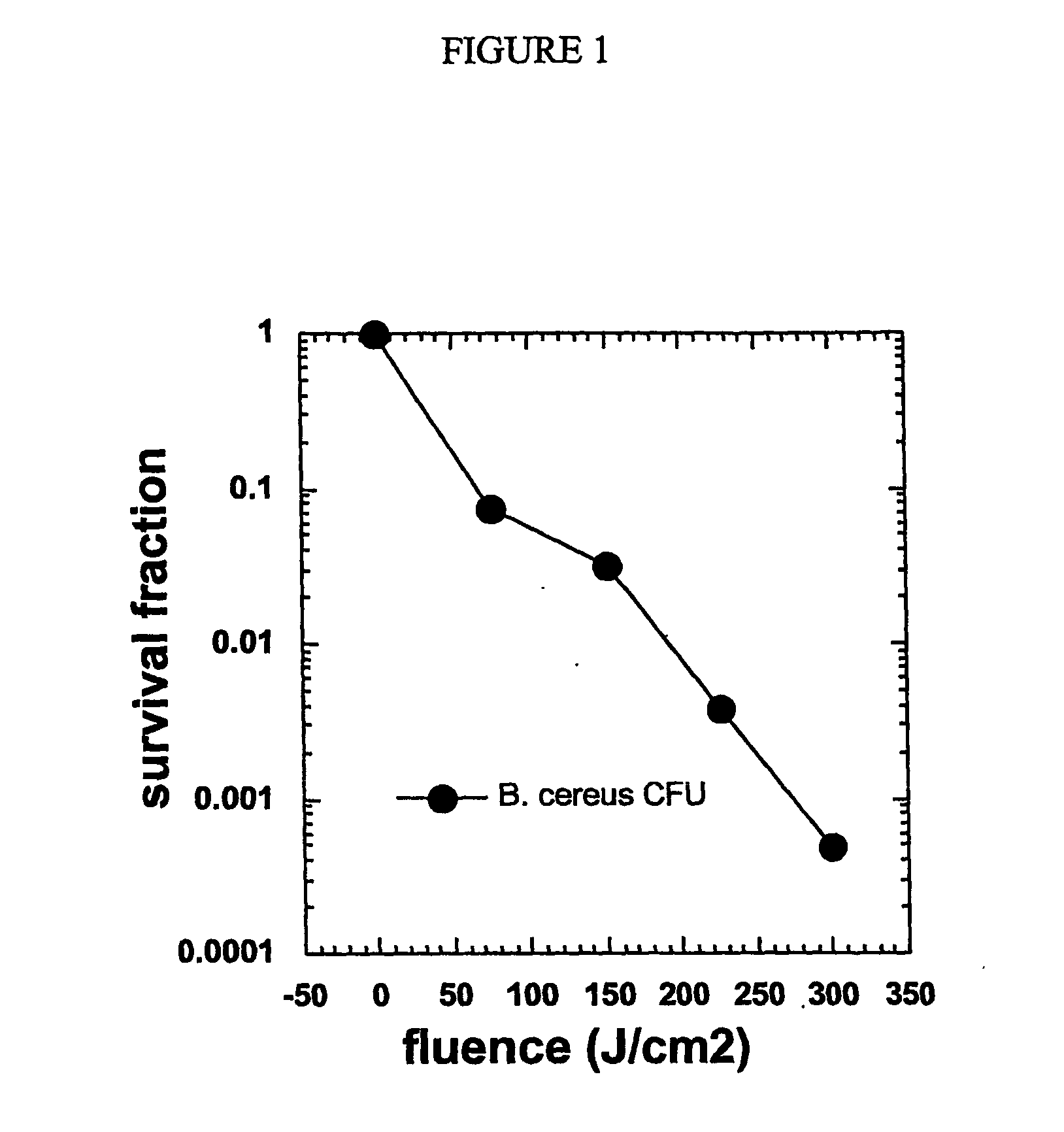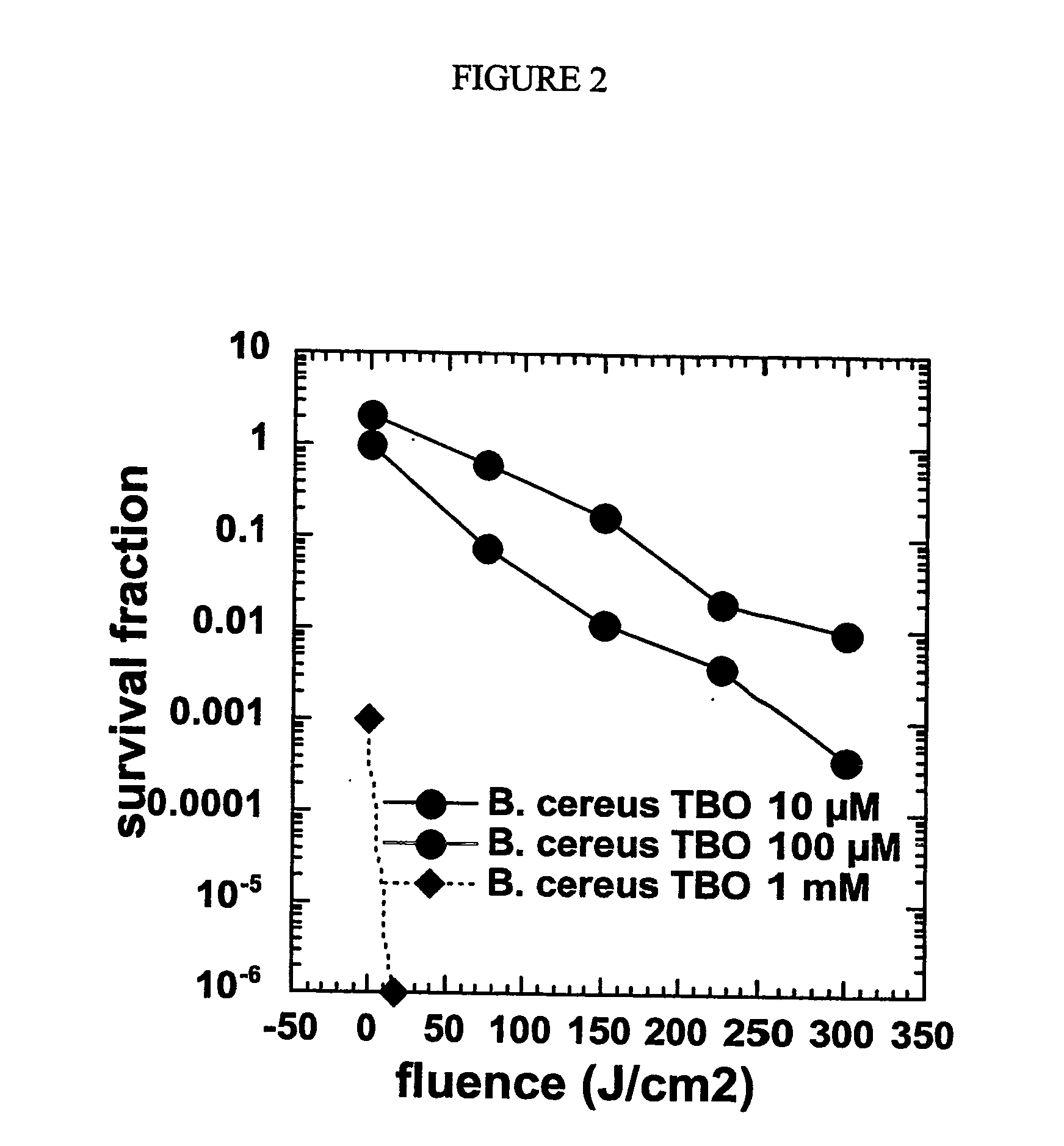Photodynamic inactivation of bacterial spores
a technology of inactivation and bacterial spores, applied in the field of photodynamic inactivation of bacterial spores, can solve the problems of large devastation, frequent death of infection through inhalation of b. anthracis /i>spores (“inhalational anthrax”), and increased concerns about non-natural exposure routes
- Summary
- Abstract
- Description
- Claims
- Application Information
AI Technical Summary
Benefits of technology
Problems solved by technology
Method used
Image
Examples
example 1
Bacillus Species Studied, Methods of Culture and PDI Methods
[0155] As access to B. anthracis is highly regulated, much of the research into Anthrax is now performed using B. cereus as a surrogate. B. cereus is very closely related to B. anthracis and a recent report suggests that from a genetic viewpoint they are the same species (Helgason et al., 2000). A similar argument is made regarding B. thuringiensis which is widely used as a biological insecticide. In fact, there is mention of the B. anthracis “cluster” that includes all B. anthracis strains (both pathogenic and non-pathogenic) together with numerous B. cereus and B. thuringiensis strains (Schuch et al., 2002). While B. cereus is most widely known as a cause of food-borne illness (Carlin et al., 2000), it not infrequently causes localized tissue infections in humans after gunshot wounds (Krause et al., 1996) or other trauma (Akesson et al., 1991; Krause et al., 1996) and the spores are thought to be equally resistant to spo...
example 2
Effect of Toludine Blue on survival of B. cereus Spores
[0163] As shown in FIG. 1, when B. cereus spores were incubated with 100 μM TBO for 10 minutes and irradiated with 100 mW / cm2 635-nm light, greater than 99.9% of the spores were killed.
[0164] The data shown in FIG. 2 illustrate the effect of different concentrations of TBO. B. cereus spores were incubated with either 10 μM, 100 μM or 1 mM TBO for 10 minutes and irradiated with 100 mW / cm2 635-nm light. The killing of B. cereus spores was found to be improved, depending on both TBO concentration and light fluence. At the 1 mM dose, TBO exhibited significant dark toxicity to spores, and complete killing of spores at the first lowest light dose tested.
[0165]FIG. 6 illustrates the effect of varying incubation periods on the effectiveness of TBO in PDI. Spores were incubated in 50 μM TBO for various times ranging from 1 minute to 24 hours. Irradiation was either applied concurrently with photosensitizer incubation, or subsequent to...
example 3
Comparison of the Effect of Toludine Blue in PDI with B. cereus, B. thuringiensis, B. subtilis and B. atrophaeus Spores
[0166] The data presented in FIG. 3 shows the effect of TBO on various different Bacillus species. B. cereus and B. thuringiensis were the most susecptible to PDI, requiring one tenth the amount of dye and one sixth the amount of light to produce more than 99.9% killing as compared to B. subtilis and B. athrophaeus.
PUM
| Property | Measurement | Unit |
|---|---|---|
| wavelength in the range | aaaaa | aaaaa |
| wavelength | aaaaa | aaaaa |
| wavelength in the range | aaaaa | aaaaa |
Abstract
Description
Claims
Application Information
 Login to View More
Login to View More - R&D
- Intellectual Property
- Life Sciences
- Materials
- Tech Scout
- Unparalleled Data Quality
- Higher Quality Content
- 60% Fewer Hallucinations
Browse by: Latest US Patents, China's latest patents, Technical Efficacy Thesaurus, Application Domain, Technology Topic, Popular Technical Reports.
© 2025 PatSnap. All rights reserved.Legal|Privacy policy|Modern Slavery Act Transparency Statement|Sitemap|About US| Contact US: help@patsnap.com



